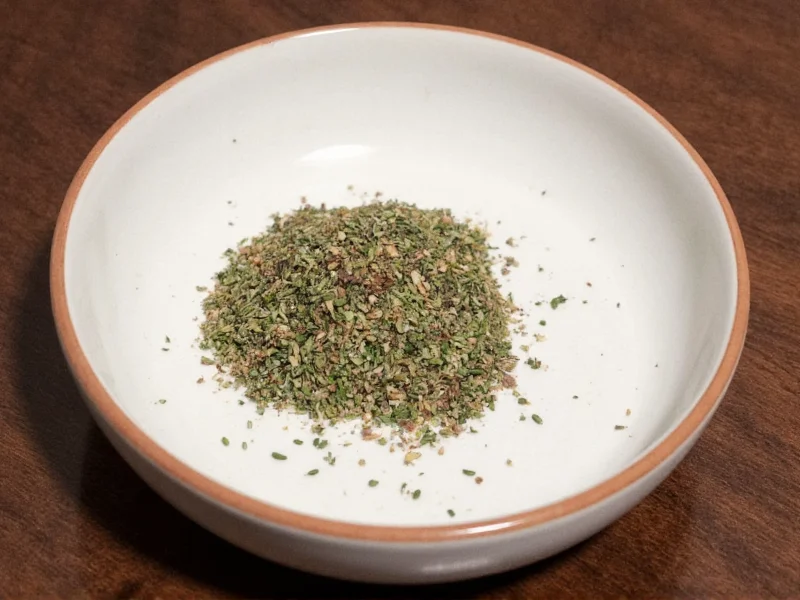When converting fresh thyme to dried in your recipes, understanding the precise measurement ratio is essential for achieving balanced flavors. The standard culinary conversion follows a 3:1 ratio—meaning you need one-third the amount of dried thyme compared to fresh. This principle applies universally across herb conversions, but thyme's distinctive earthy, slightly minty flavor makes accurate measurement particularly important.
Why the 3:1 Conversion Ratio Matters
Thyme loses approximately 70-80% of its weight during the drying process as moisture evaporates. This concentration significantly intensifies the essential oils responsible for thyme's characteristic flavor. Using equal measurements would result in overpowering, potentially bitter dishes. Professional chefs and food scientists consistently validate this 3:1 ratio through sensory testing and chemical analysis of herb compounds.
Complete Thyme Conversion Reference Chart
| Fresh Thyme | Dried Thyme Equivalent | Best Usage Context |
|---|---|---|
| 1 teaspoon | ⅓ teaspoon | Sauces, dressings, delicate dishes|
| 1 tablespoon | 1 teaspoon | Stews, braises, roasted vegetables|
| 2 tablespoons | 2 teaspoons | Hearty soups, meat rubs, marinades|
| ¼ cup | 1¼ tablespoons | Large-batch cooking, preserving
Adjusting for Recipe Specifics
While the 3:1 ratio serves as your foundational guideline for fresh thyme to dried thyme conversion, consider these variables for optimal results:
- Recipe moisture content: In wet dishes like soups or stews, dried thyme has time to rehydrate, so stick strictly to the conversion. In drier applications like rubs, you might reduce the dried amount by 10-15%.
- Thyme variety: Lemon thyme and other specialty varieties often have more concentrated flavors—use 25% less dried than standard conversion.
- Storage duration: Dried thyme loses potency over time. If your dried thyme is older than 6 months, increase the amount by 20-25%.
- Cooking time: Add dried thyme earlier in the cooking process (30+ minutes before serving) to allow full flavor development.
Maximizing Flavor in Your Dishes
When substituting dried for fresh thyme, proper technique significantly impacts your final dish. For the best results with your 2 tsp fresh thyme to dried conversion:
- Bloom dried thyme: Heat the dried thyme in oil or butter for 30-60 seconds before adding other ingredients. This releases trapped essential oils.
- Crush between fingers: Rub dried thyme between your palms before adding to release aromatic compounds.
- Layer flavors: Add half the dried thyme at the beginning of cooking and the remainder in the last 15 minutes for complex flavor development.
- Adjust at the end: Taste before serving and add a tiny pinch more dried thyme if needed—remember it takes 10-15 minutes for flavors to fully integrate.
Storage Tips for Optimal Potency
Proper storage directly affects your thyme measurement conversion accuracy. Dried thyme maintains peak potency for 6-12 months when stored correctly:
- Store in airtight glass containers away from light and heat
- Keep whole dried thyme leaves intact until use (crush just before adding)
- Test potency by rubbing and smelling—faint aroma indicates reduced strength
- Freeze fresh thyme in olive oil cubes for longer storage with minimal flavor loss
Common Conversion Mistakes to Avoid
Many home cooks make these critical errors when performing thyme substitution in recipes:
- Equal measurement substitution: Using 2 tsp dried instead of 2 tsp fresh creates overwhelmingly strong flavor
- Ignoring recipe timing: Adding dried thyme too late in cooking prevents proper flavor development
- Overpacking measuring spoons: Gently fill dried herb measurements without packing for accurate conversion
- Not accounting for age: Older dried herbs require slight measurement increases
When Fresh Is Truly Essential
While dried thyme equivalent to fresh works well in most cooked dishes, certain applications demand fresh thyme for optimal results:
- Raw applications like fresh herb salads or compound butters
- Garnishes where visual appeal matters
- Delicate dishes like fish ceviche or fresh tomato salads
- When precise control over herb intensity is critical
Understanding these nuances transforms your herb conversion chart for cooking from a simple measurement tool into a sophisticated flavor management system. The next time your recipe calls for fresh thyme but you only have dried available, you'll know exactly how to adjust while maintaining culinary integrity.











 浙公网安备
33010002000092号
浙公网安备
33010002000092号 浙B2-20120091-4
浙B2-20120091-4